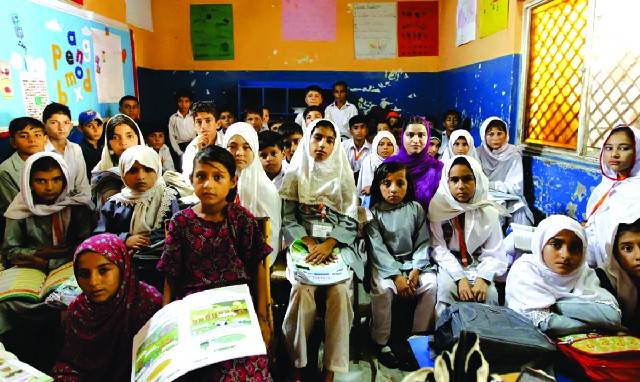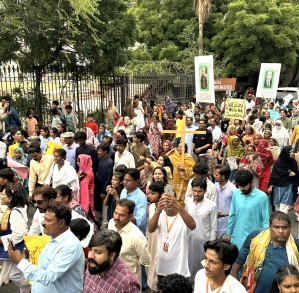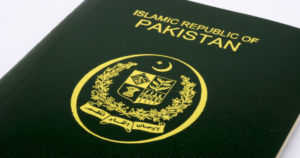
The number of school dropouts in Pakistan has continued to grow despite the tall claims made by successive governments in Islamabad. The number of school dropouts from the age of 5-16 has touched 26 million figure now. The situation is worse for girls as a little over half of girls can complete primary education in Pakistan.[1] Socio-economic barriers, cultural rigidity, inadequate financing, limited enforcement of policy commitments and gender disparity have restricted access to elementary education and escalated the dropout rate.
In May 2024, Pakistani Prime Minister Shehbaz Sharif declared an education emergency in the country and promised reforms, on lines with carried out Germany and Japan, to arrest the school dropout rate and promote literacy. “Why can’t Pakistan be? I guarantee, if we move in unison to find our space, Pakistan will emerge as one of the most educated societies one day,” Sharif said.[2]
Educationist M Nadeem Nadir picked a hole in the declaration of education of emergency saying previous such attempts could only reduce the school dropout rate by just 2 percent in one decade. “The farce of education emergency has been enacted many a time with no discernible remedial impact,” he said. “The low literacy rate of 62.2 percent and dismal allocation of 1.7 percent of the GDP to the education sector reveal the level and validity of the concern of respective governments and their education emergencies.”[3]
Pakistan is reeling under extremely high inflation, which has made sustenance a challenging job for a significant population. Against such a backdrop, textbook cost was increased by 95 percent in 2023.[4] This exacerbated the school dropout rate.[5] “As a consequence, a growing number of children find themselves either dropping out or being homeschooled. The impact of soaring textbook prices extends beyond the immediate financial strain on families,” slammed Express Tribune in its editorial.[6]
In Pakistan’s capital city of Islamabad, over 83,000 children are out of school.[7] The situation is much worse in other parts of Pakistan as about 40 percent of the total school-going population is not enrolled. “The reasons behind this are varied: economic instability leading children into labour, cultural norms restricting girls’ education, and geographical disparities that hinder access to schools for children in rural or conflict-affected areas,” said education analyst Muhammad Murtaza Noor.[8]
There is a huge gender disparity in access to education in Pakistan as the enrollment rate for girls is 49 percent lower than that of boys. It is quite rampant in rural areas, where sociocultural norms and financial limitations bar girls from getting enrolled in schools, said Pakistani writer Saira Batada. “A significant obstacle to women’s education is early marriage, as 21 per cent of girls get married before turning 18, which raises the dropout rate,” she said.[9]
About 50 percent of schools in Pakistan do not have boundary walls, which has contributed to the shortage of females in schools. The major concerns were safety and security, said Aisha Naz Ansari and Dr Sajid Ali, researchers at Karachi-based Aga Khan University. “This challenge is a prominent concern for parents, students, and teachers. The frequent incidents of crime against girls have created a sense of mistrust among parents and females, including students and teachers,” they wrote in a report prepared for UNESCO.[10]
The education emergency has become worse due to insufficient funding, administrative inefficiencies, and political instability. Inadequate infrastructure and facilities due to government inertia and bureaucratic failures have been responsible for the people losing interest in formal education in Pakistan. “These factors have led to abysmal dropout rates, particularly in rural areas, where children often forego education to support their families financially,” said researcher and writer Mir Mohsin.[11]
Pakistan allocates less than 2 percent of its GDP to education, which is quite below the globally recommended share of 4-6 percent.[12] Both federal and provincial governments in Pakistan spend low amount on education and the allocated amount is generally spent on recurrent items such as teachers’ salaries, as per the Asian Development Bank (ADB). “Poor spending performance can translate into substantial opportunity costs in terms of forgone school participation,” it remarked.[13]
END.
[1] https://www.norrag.org/primary-school-girls-drop-out-in-pakistan-a-diagnosis-of-root-causes-and-policy-alternatives/
[2] https://www.dawn.com/news/1832339
[3] https://tribune.com.pk/story/2467355/another-education-emergency
[4] https://www.dawn.com/news/1796581
[5] https://www.samaa.tv/208736222-beyond-affordability-structural-issues-plague-pakistan-s-education-system
[6] https://tribune.com.pk/story/2450228/textbook-prices-surge
[7] https://www.thenews.com.pk/print/1107766-over-83-000-out-of-school-children-in-islamabad
[8] https://www.thenews.com.pk/print/1198099-education-emergency-in-pakistan-facing-the-stark-realities
[9] https://tribune.com.pk/story/2455681/navigating-the-challenges-of-girls-education-in-pakistan
[10] https://world-education-blog.org/2023/12/04/primary-school-girls-drop-out-in-pakistan-a-diagnosis-of-root-causes-and-policy-alternatives/#more-33351
[11] http://brighterkashmir.com/education-emergency-vs-emerging-education#:~:text=This%20dire%20situation%20translates%20to,education%20sector%20exacerbates%20the%20situation.
[12] https://www.unesco.org/en/articles/unesco-member-states-unite-increase-investment-education
[13] https://www.adb.org/sites/default/files/publication/771091/adb-brief-207-access-challenges-education-pakistan.pdf



